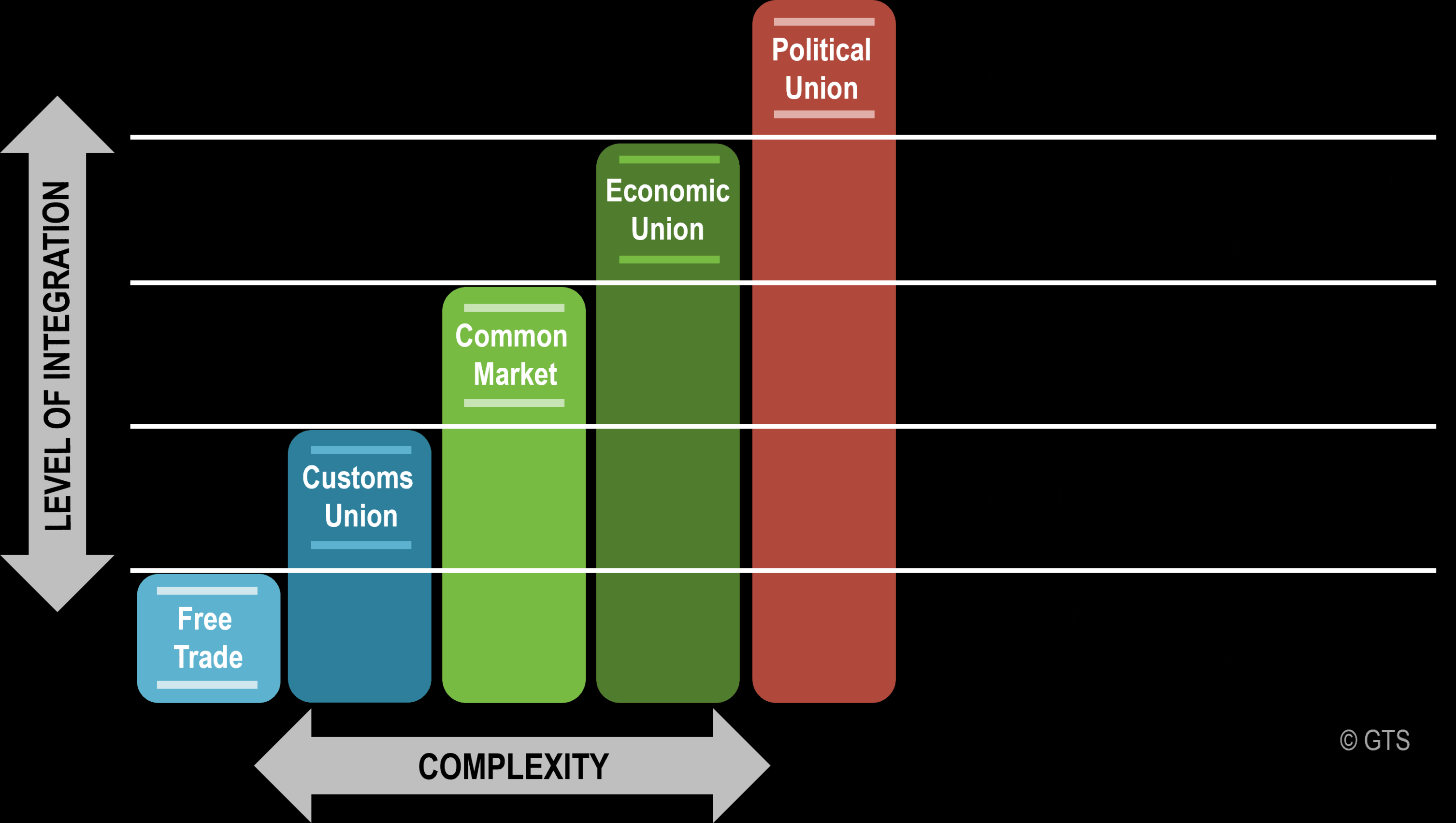Economic Integration Blocs: A Comprehensive Guide

Introduction
In today’s interconnected world, economic integration blocs have emerged as powerful engines of regional and global cooperation, fostering economic growth, facilitating trade, and promoting shared prosperity. These blocs, composed of sovereign nations, voluntarily collaborate to establish unified economic frameworks, dismantling trade barriers, harmonizing policies, and coordinating their economies.
Understanding Economic Integration Blocs
Economic integration blocs represent a spectrum of cooperation, ranging from rudimentary free trade agreements to highly integrated economic unions. Each level of integration entails progressive steps towards a more interconnected economy, characterized by the removal of trade barriers, the establishment of common rules and regulations, and the harmonization of economic policies.
Types of Economic Integration Blocs
1. Free Trade Area (FTA): The most basic form of integration, an FTA eliminates tariffs and other trade restrictions among member countries, allowing goods and services to flow freely within the bloc.
2. Customs Union: Building upon an FTA, a customs union establishes a common external tariff for goods traded outside the bloc, while maintaining internal free movement.
3. Common Market: A common market further deepens integration by establishing not only free movement of goods and services but also the free movement of capital, labor, and enterprises within the bloc.
4. Economic Union: An economic union represents a highly integrated bloc, featuring a common market, a common currency, and potentially harmonized fiscal and monetary policies.
5. Political Union: The ultimate form of integration, a political union goes beyond economic cooperation and establishes a unified political system, often involving common institutions, decision-making processes, and even a shared foreign policy.
Significance of Economic Integration Blocs
Economic integration blocs play a pivotal role in shaping global trade dynamics and fostering economic prosperity. Their significance lies in several key aspects:
1. Enhanced Trade and Economic Growth: By removing trade barriers and harmonizing policies, integration blocs stimulate intra-bloc trade, leading to increased economic activity, job creation, and overall growth.
2. Expanded Market Access: Businesses within integrated blocs gain access to a wider market, enabling them to expand their operations, reach new customers, and diversify their production.
3. Attracting Foreign Investment: The stability and predictability of integrated blocs attract foreign investment, further fueling economic growth and development.
4. Promoting Competition: Integration fosters a more competitive environment, incentivizing businesses to innovate, improve efficiency, and enhance product quality.
5. Enhancing Bargaining Power: Integrated blocs collectively wield greater bargaining power in international trade negotiations, securing more favorable terms of trade for their members.
Examples of Economic Integration Blocs
1. Association of Southeast Asian Nations (ASEAN): Established in 1967, ASEAN comprises ten member countries in Southeast Asia, promoting regional cooperation and economic integration.
2. European Union (EU): The EU stands as the most advanced example of economic integration, encompassing 27 member states with a unified market, common currency (euro), and harmonized policies.
3. North American Free Trade Agreement (NAFTA): NAFTA, initially linking Canada, Mexico, and the United States, aimed to eliminate trade barriers and promote economic cooperation in North America.
Challenges and Considerations
Despite their numerous benefits, economic integration blocs also face challenges:
1. Balancing National Sovereignty: Member states must reconcile their national interests with the collective goals of the bloc, ensuring that integration does not infringe upon their sovereignty.
2. Addressing Economic Disparities: Integration can exacerbate economic disparities among member states, requiring measures to ensure equitable distribution of benefits and support less developed regions.
3. Harmonizing Regulations and Standards: Aligning diverse national regulations and standards can be a complex process, potentially hindering the smooth flow of goods and services.
4. Managing Labor Mobility: Integration may lead to labor migration, requiring policies to address potential social and economic impacts on local labor markets.
The Future of Economic Integration Blocs
Economic integration blocs are likely to continue playing a crucial role in shaping the global economic landscape. As countries seek to strengthen regional cooperation and navigate the complexities of globalization, integration blocs will remain at the forefront of economic collaboration and shared prosperity.
Conclusion
Economic integration blocs have transformed the global economic landscape, fostering trade, promoting growth, and enhancing cooperation among nations. As the world becomes increasingly interconnected, these blocs will continue to evolve, adapting to new challenges and opportunities, shaping the future of global economic integration and shared prosperity.
FAQs
1. What is the difference between economic



